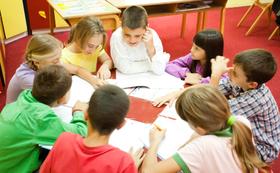Top Rankings
Clarksville School District ranks among the top 20% of public school district in Arkansas for:
Category
Attribute
Graduation Rate
Highest graduation rate (Top 10%)
Diversity
Most diverse schools (Top 1%)
Community Size
Largest student body (number of students) (Top 1%)
For the 2025-26 school year, there are 2 public high schools serving 1,012 students in Clarksville School District. This district's average high testing ranking is 6/10, which is in the top 50% of public high schools in Arkansas.
Public High Schools in Clarksville School District have an average math proficiency score of 21% (versus the Arkansas public high school average of 27%), and reading proficiency score of 44% (versus the 40% statewide average).
Public High School in Clarksville School District have a Graduation Rate of 92%, which is more than the Arkansas average of 89%.
The school with highest graduation rate is Clarksville High School, with 90-94% graduation rate. Read more about public school graduation rate statistics in Arkansas or national school graduation rate statistics.
Minority enrollment is 51% of the student body (majority Hispanic), which is more than the Arkansas public high school average of 41% (majority Black).
Overview
This School District
This State (AR)
# Schools
6 Schools
376 Schools
# Students
2,512 Students
177,587 Students
# Teachers
169 Teachers
18,607 Teachers
Student-Teacher Ratio
15:1
15:1
Student By Grade
District Rank
Clarksville School District, which is ranked within the top 50% of all 257 school districts in Arkansas (based off of combined math and reading proficiency testing data) for the 2022-2023 school year.
The school district's graduation rate of 92% has increased from 90-94% over five school years.
Overall District Rank
#110 out of 258 school districts
(Top 50%)
(Top 50%)
Math Test Scores (% Proficient)
37%
39%
Reading/Language Arts Test Scores (% Proficient)
40%
40%
Science Test Scores (% Proficient)
33%
36%
Graduation Rate
92%
88%
Students by Ethnicity:
Diversity Score
0.64
0.59
% American Indian
1%
1%
% Asian
10%
2%
% Hispanic
35%
15%
% Black
1%
18%
% White
48%
59%
% Hawaiian
1%
1%
% Two or more races
4%
4%
All Ethnic Groups
District Revenue and Spending
The revenue/student of $12,943 in this school district is less than the state median of $13,136. The school district revenue/student has stayed relatively flat over four school years.
The school district's spending/student of $12,203 is less than the state median of $13,047. The school district spending/student has stayed relatively flat over four school years.
Total Revenue
$33 MM
$6,371 MM
Spending
$31 MM
$6,327 MM
Revenue / Student
$12,943
$13,136
Spending / Student
$12,203
$13,047
Best Clarksville School District Public High Schools (2025-26)
School
(Math and Reading Proficiency)
(Math and Reading Proficiency)
Location
Quick Facts
Rank: #11.
Clarksville Junior High School
(Math: 23% | Reading: 45%)
Rank:
Rank:
5/
Bottom 50%10
1801 Clark Rd
Clarksville, AR 72830
(479) 705-3224
Clarksville, AR 72830
(479) 705-3224
Gr: 8-9 | 436 students Student-teacher ratio: 14:1 Minority enrollment: 55%
Rank: #22.
Clarksville High School
(Math: 15-19% | Reading: 40-44%)
Rank:
Rank:
4/
Bottom 50%10
1703 Clark Rd
Clarksville, AR 72830
(479) 705-3212
Clarksville, AR 72830
(479) 705-3212
Gr: 10-12 | 576 students Student-teacher ratio: 13:1 Minority enrollment: 49%
Recent Articles

School Vouchers: Updated Pros and Cons (2025 Review)
Comprehensive 2025 analysis of school vouchers, weighing benefits and challenges for families, funding, outcomes, and policy directions.

Benefits and Drawbacks of Homework in 2025
Explore updated 2025 insights on homework’s benefits, drawbacks, mental health impact, best practices, and policy trends in U.S. public schools.

Charter Schools vs Public Schools 2025: Key Differences & Trends
Explore updated 2025 insights comparing charter schools vs public schools, enrollment, academic outcomes, funding, and real-world examples for families and educators.





